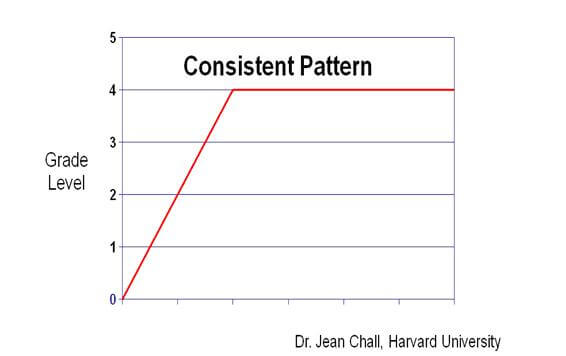How many words are there in the English language? A question with a complicated answer. Depending on your criteria, the answer can range from somewhere around a quarter of a million words to one million words, give or take a few hundred thousand. Even to the most enthusiastic logophile, that is an overwhelming amount of words to use when reading, writing, and speaking. Thankfully, relatively few of these words meet most of our basic reading, writing, and speaking needs.
The English words needed for most communications are referred to by terms such as sight words, high-frequency words, and most common words. Researcher Edward B. Fry ranked these words in order of frequency. The first 25 words on the list make up about a third of all printed material. The first 100 make up about half of all written material, and the first 300 make up at least 65 percent of all written material (Fry, Kress, & Fountoukidis, 2000).
To quickly illustrate this concept, let’s look at this twenty-word quote by John F. Kennedy:
“My fellow Americans, ask not what your country can do for you, ask what you can do for your country.”
Here is what would remain if we removed words included in the first three hundred of the most frequently used words.
“fellow Americans”
The ability to quickly recognize these common words in written text helps students to read at a pace that is conducive to comprehension.
The Problem
It stands to reason that these words are a major focus of beginning reading instruction. Because many teachers believe that most common words are highly irregular in their spelling, they teach students to rely on visual memorization as the best option. To teachers of these early grade levels this approach may appear to work just fine. In fact, research has shown that students in grades 1-3 do fairly well reading grade level text, increasing their accuracy and fluency each year.

This can be explained, in part, by the fact that about 80 percent of text at this level is comprised of the first three hundred most frequently used words. However, in higher levels words in text become more specialized and less familiar. In American schools, evidence of such a problem manifests itself sometime around 4th grade when reading scores cease to incline. This “4th grade slump” (Chall, Jacobs, & Baldwin; 1990) has been consistently evident over time. Without systematic, explicit phonics instruction, students will lack the skills necessary to decode words that are not as frequent.
The Solution
The notion that Most Common Words are irregularly spelled is incorrect. In fact, researchers have estimated that nearly 50 percent of English words are predictable based on sound-letter correspondences that can be taught with good explicit phonics instruction. Another 34 percent of words are predictable except for one sound. When factoring in word origin and word meaning, they conclude that only 4 percent of English words are truly irregular (e.g., of, eye) and, as a result, may have to be learned visually (Hanna, Hanna, Hodges & Rudorf; 1966).
It is important to teach students how the sounds in language are represented in print. Phonics instruction helps students learn how to decode most words accurately and quickly so they can focus on the meaning of text. One very effective practice for teachers to implement is to teach students to recognize elements of Most Common Words that are consistent with the sound-letter patterns that they have learned during phonics instruction (Adams 1990). With this type of instruction, not only will spelling improve but reading fluency will continue to increase. Students will have the skills necessary to decode almost any word they encounter, even if it is the least frequent word out of hundreds of thousands of words in the English language.
REFERENCES
Adams, M. A. (October, 1990). Beginning Reading Instruction in the United States. ERC Digest. ERIC Clearinghouse on Reading and Communication Skills.
Chall, J. S., Jacobs, V. A., & Baldwin, L. E. (1990). The reading crisis: Why poor children fall behind. Cambridge, MA: Harvard University Press.
Fry, E.B., Fountoukidis, D.L., & Kress, J. (2000). The Reading Teacher’s Book of Lists. Englewood Cliffs, N.J.: Prentice-Hall
Hanna, J.S, Hanna, P.R, Hodges, R.E., & Rudorf, E. H., (1966). Phoneme-Grapheme Correspondences as Cues to Spelling Improvement. USDOE Publication No. 32008. Washington, D.C.: U.S. Government Printing Office.
